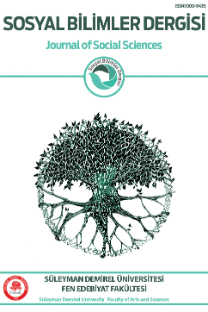İran'ın Kültürel Bir Antitezi: Turan
“Turan” sözcüğünün Avesta’da geçen “Tur” sözcük kökünden türediği kabul edilmektedir. Araştırmacıların çoğu, Tur sözcüğünün etnik bir kökenden ya da coğrafî bir bölgeden ziyade bir kavim/kabile adına işaret ettiğini savunur. İran, yerleşik kültürün temsilcisi olarak görülürken Tur (an) ise konargöçer bir kültürün temsilcisi olarak görülür. Bu bağlamda İran ile Turan, birbirine zıt iki kültürün oluşturduğu “daire”lere vurgu yapmaktadır.
Sâsânîler, Avesta çağından aldıkları “İran” sözcüğünü siyasi düzenlerinin adı olarak kullanmıştır. Onlar, öncüllerini tarihî hafızalarından silerek kendilerini Avesta çağı kavramlarına ve unsurlarına bağlamıştır. Bu kavram ve unsurların yanı sıra Zerdüştlükteki düalist yapı da Sâsânî ideolojisine ve coğrafyasına aktarılmıştır. Yine bu dönemde “İkici” bir anlayışın göstergesi olarak Aniran, Aniranşehr gibi terimlerin de kullanıldığı görülmektedir. Zerdüşt düalizminin ve karşıt unsurların bir başka tezahürü ise İran’ın kültürel bir antitezi olan Turan terimidir.
Turan, Sâsânîlerin erken dönemlerinde ülkenin güneydoğusundaki “düşman” bir halkı işaret etmektedir. MS III. yy. ın sonlarına doğru Turan, bir ülke adı olarak Sâsânî yazıtlarında karşımıza çıkar. Terim, MS V. yy. dolaylarında İran’ın güneydoğusundan kuzeydoğusuna taşınmış ve o dönemdeki tüm bozkır halklarını kapsayacak şekilde kullanılmaya başlanmıştır. Bu kullanımda hiçbir etnik ayrım gözetilmemiştir. MS V. ve VI. yy. a karşılık gelen bu dönem, özellikle Hunların İran’ın doğusunda yoğun bir şekilde görülmeye başlandığı bir dönemdir. Sâsânîler, bu kavimlerle karşılaştıklarında Avesta’da Turlar ile mücadele eden hükümdarlarla kendilerini özdeşleştirmiştir. Böylelikle, “öteki” olarak algılanan bu kavimler “Turan” olarak adlandırılmıştır.
Tur teriminin Turan’a dönüşmesi gibi İran’ın doğusu da melez bir yapıya dönüşmüştür. Turanlıların neden olduğu bu durum, İran’ın doğusunun “Transavrasya” hattına katılması ile sonuçlanmıştır. Bu açılım, İran’ın yüzyıllar boyunca Turan kültürüne maruz kalarak bu kültürü sahiplenmelerine neden olmuştur. Nümizmatik verilere göre Turan, Türkistan ile eş anlamlı/özdeş bir şekilde MS VII. yy. ın başlarında kullanılmaktadır. Bu eş anlamlılığın birdenbire ortaya çıkması mümkün değildir. O nedenle bu sürecin en geç Sâsânîler döneminde başladığı söylenebilir.
Anahtar Kelimeler:
Sasaniler, İran Çalışmaları, Akhunlar, Göçebeler, İran ve Turan
A Cultural Antithesis of Iran: Turan
It is accepted that the word “Turan” is derived from the root “Tur” in the Avesta. Most scholars argue that the word Tur refers to the name of a “tribe” rather than an ethnic origin or a geographical region. While Iran is considered as the representative of the settled culture, Tur (an) is also considered as the representative of the nomadic culture. In this context, Iran and Turan emphasize two different cultural circles.
The Sassanids used the word "Iran" as the name of their political order. They based themselves on concepts and elements of the Avestan era. In addition to the concepts of the age of the Avesta, the dualist structure in Zoroastrianism was also transferred to the Sassanid ideology and geography. Terms such as Aniran, Aniranshahr were used in this period as an indication of the “dualistic” mentality. A manifestation of zoroastrian dualism and opposing elements has also been the term Turan as an antithesis of Iran.
In the early Sasanian period, Turan refers to an “enemy” people in the southeast of the country. It is seen that the word "Turistan" was used as a geographical term in this period. “Turan” appears in Sasanian inscriptions as a country name towards the end of the 3rd century AD. This term was transferred from the southeast of Sasanian Iran to the northeast and began to be used to include all the steppe peoples of that period. The most important detail of this usage is that no ethnic distinction is made between the peoples called Turanians. This period, which corresponds to the 4th and 5th centuries AD, is a period in which the Huns began to appear intensively in the east of the Sassanids. When the Sassanids encountered these tribes, they identified themselves with the rulers who struggled with the “Turs” in the Avesta. Thus, these tribes, which are the other, were called Turan.
Just as the Tur has transformed into Turan, the east of Iran has also transformed into a hybrid structure. Thus, the east of Iran was included in “Transeurasian” line. This has caused Iran to be exposed to the Turanian culture. According to numismatic data, Turan was used synonymously with the word “Turkistan” at the beginning of the 7th century AD. It is not possible for this synonymy/identity to emerge suddenly. Therefore, it can be said that this process started in the Sassanid period at the latest.
Keywords:
Iran and Turan, Sassanids, Iranian Studies, White Huns, Nomads,
___
- kaynakça eklenmeli
- ISSN: 1300-9435
- Yayın Aralığı: Yılda 3 Sayı
- Başlangıç: 1995
- Yayıncı: Süleyman Demirel Üniversitesi, Fen-Edebiyat Fakültesi
Sayıdaki Diğer Makaleler
Hazarlarda Hiyerarşik Düalite: İkili Krallık Sisteminin Tarihsel Kökenleri
Birbirleri ile Konuşan Makinalar: Bilginin Açık Veri Destekli Açık Erişime Doğru Evrilmesi
Yol ve Töre Dergilerindeki Yazıları Ekseninde Erol Güngör’ün Türk Soluna Yönelik Eleştirileri
Bourdieu Kavramlarıyla Askeri Alanı Okumak
Kiğı Sancağı’ndaki Aşiret ve Cemaatlerin Sosyo-Ekonomik Yapısı (1518-1642)
Yaşlı Bireylerin Dijital Alanda Sosyalleşmesi Üzerine Bir Çalışma
Meyrem TUNA UYSAL, Şermin ZENGİN
Siyasetin Finansmanı, Siyasette Dijital Finans Kullanımı
Yaşam Kalitesi ve Sosyal Sermaye Unsuru Olarak Güven ve Kurum İlişkisi
